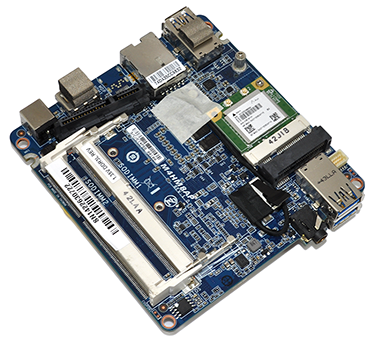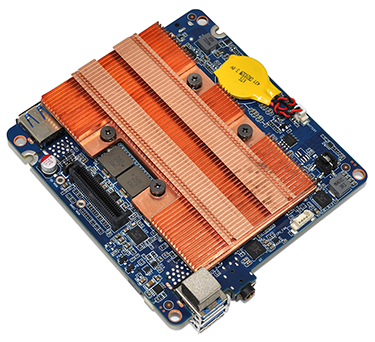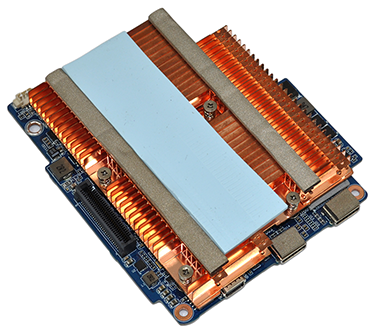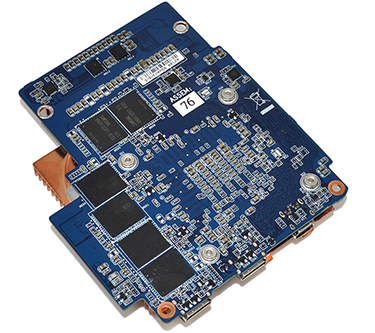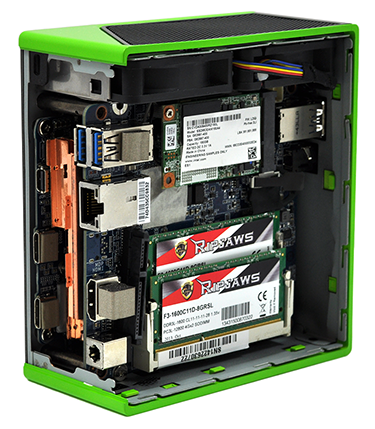Dedicated Graphics
All seems straightforward enough thus far, but the Brix Gaming isn't equipped with a particularly large motherboard, so how has Gigabyte managed to squeeze in a Core i5 chip and dedicated GeForce graphics?
Removing the motherboard provides a few clues. Flipping it over reveals a low-profile copper heatsink sat atop of the Core i5-4200H processor. This is a latest-generation Intel Haswell part capable of speeds of up to 3.4GHz across two hyper-threaded cores. TDP is measured at 47W - significantly more than the 15W chips typically used in an Intel NUC - and the chip comes equipped with integrated HD 4600 graphics.
The Core i5 wouldn't look out of place in a full-size desktop, and the component selection thus far would make for a very tidy mini-PC. However, Gigabyte has gaming ambitions, so you see that strange-looking connector next to the CPU heatsink? That's for the bridge which hooks up the daughterboard.
This secondary PCB is dedicated entirely to graphics. Sat beneath the second, chunkier copper heatsink is a GeForce GTX 760 whose name doesn't tell the full story. Digging deeper into the make-up of this GK104 part reveals 1,344 shader cores clocked at 941MHz (967MHz Boost) and a 6GB GDDR5 frame buffer hooked-up via a 192-bit bus and clocked at an effective 5,000MHz.
The GPU specification suggests that this is a custom Gigabyte design based on the mobile GeForce GTX 870M, but we're surprised to see that a power-efficient Maxwell chip (i.e. GTX 750 Ti) wasn't used instead. And if this really is a mobile part, it's a shame it doesn't run in tandem with the Intel IGP via Nvidia's Optimus switching technology.
Both PCBs are stacked tightly together, heatsink on heatsink, and it's fair to assume that heat and noise are going to be the Brix Gaming's biggest challenge. To help keep the unit running as cool as possible, two small fans are positioned on one side of the chassis; these draw-in cool air, push it through the heatsinks and out a vent at the opposite end.
Trouble is, they aren't quite as effective as needs be. The box does run hot - we'll cover temperatures in more detail later in the review - and noise output is noticeable, with our PCE-318 sound meter registering a distracting 46dB when the system is idling. And that's just for starters, as noise levels rise to a lofty 57dB when gaming.
Gigabyte is being hugely ambitious with the Brix Gaming mini-PC. On the face of it, we have the performance of a proper gaming tower in an impossibly-small form factor. But it is relatively expensive at around £560 - remember, that's without operating system, storage and memory - and both heat and noise are obvious drawbacks. Any such provisos could be rendered moot if the Brix Gaming turns out to be a high-performance, pocket-sized, LAN-going rig, so let's fire it up and run some benchmarks.






